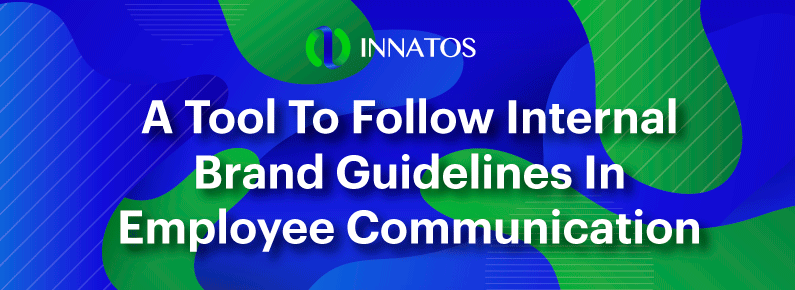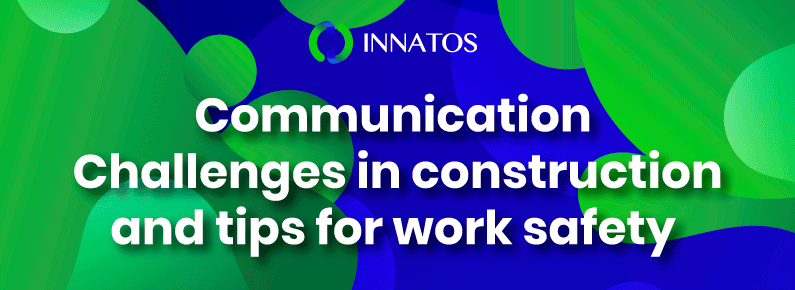Effective Leadership Communications: Lessons Learned
Effective Leadership Communication, Lessons Learned. Corporate leaders are facing unprecedented challenges during the COVID-19 pandemic as they navigate the economic and social effects the virus is having on their companies.
Around the world, we’re seeing countries experience the pandemic in different ways. Cases rise and fall. Sectors of the economy open and close. Some industries can operate remotely and others can’t function at all. A positive case in an open workplace can result in it being closed suddenly, without warning.
One thing is for sure: COVID-19-related problems can develop quickly, and corporate leaders can’t afford to make any mistakes.
One of the biggest challenges for many corporate leaders is making communication with employees a priority during this time, particularly with so many other tasks to focus on. However, it is an important function that cannot be overlooked.
Importance of good communication from leadership during the pandemic
 Employees are grappling with lots of uncertainty during the pandemic. They’re enduring lots of disruption, having to adapt to changed ways of working as well as worrying about their families, their health and finances. Normal day-to-day routines have gone out of the windows. Many employees are balancing working from home with family responsibilities in their “workplaces” such as caring for children or overseeing schoolwork. This is affecting both their productivity and their mental health.
Employees are grappling with lots of uncertainty during the pandemic. They’re enduring lots of disruption, having to adapt to changed ways of working as well as worrying about their families, their health and finances. Normal day-to-day routines have gone out of the windows. Many employees are balancing working from home with family responsibilities in their “workplaces” such as caring for children or overseeing schoolwork. This is affecting both their productivity and their mental health.
To help overcome this, employees need to have confidence in their company’s leaders to navigate them through this crisis.
Company leaders need to engage with and strengthen the communications they have with their staff to ensure the business is unified and working towards common goals. In doing so, they can help to keep their people safe, healthy, motivated, productive, and well-informed.
- The benefits of effective leadership communication include:
- A demonstration to employees that leadership understands the problems.
- A reduction in, or avoidance of misinformation spreading.
- Reduced anxiety because employees know what is happening and won’t speculate.
- Improved or maintained levels of employee engagement.
- Greater cohesion, even if the workforce is separated and working remotely.
- Improved productivity.
What should leaders communicate during COVID?
 There are many topics that leaders should communicate with employees during the pandemic, including:
There are many topics that leaders should communicate with employees during the pandemic, including:
- Policies and rules about remote learning.
- Safety protocols for those in the office or the field.
- Any requirements for masks or other PPE.
- Health and wellbeing policies and tips.
- Security policies and tips.
- Any government restrictions affecting the company and/or industry.
- Economic implications affecting the company and/or industry.
- What employees should do if they contract COVID-19 or suspect they may have it.
- Any confirmed cases of COVID-19 in the workforce, and what that means (for example closure of facilities)
- Informing the organization if a colleague has died because of COVID-19.
- Plans to transition back to the office as restrictions ease.
- Download free letters to employees to return to work after COVID-19.
The most important aspects of communicating in COVID-19
 To be effective, any employee communications coming from leadership must be timely, authentic, and transparent. Employees look to leaders for the information they want during a crisis. Members of your leadership team – from the CEO down – should be both prominent and unified in this approach to communicating with employees.
To be effective, any employee communications coming from leadership must be timely, authentic, and transparent. Employees look to leaders for the information they want during a crisis. Members of your leadership team – from the CEO down – should be both prominent and unified in this approach to communicating with employees.
This personalized approach allows leadership to convey empathy: to show that they, too, are going through the same ups and downs and challenges as the staff because of the upheaval and uncertainty. This can also help to normalize the thoughts, feelings, and fears that employees may be having and reduce stigma.
A common issue with leadership communications, in general, is that they can often fail to communicate why the organization is doing what it is doing which means employees fail to understand the importance of this and don’t always go along on the journey as well. When you respond quickly to changing dynamics caused by the COVID-19 pandemic you are modeling positive behavior to your employees that reinforces trust and confidence.
Corporate leaders should ensure the following in their communications strategies with employees during this ever-changing situation: Putting an effective internal communications plan in place that outlines the frequency of communications and the channels that will be used to communicate with employees.
Ensuring their communication is clear, concise, and easy to understand.
Ensuring communication is timely and frequent, Effective Leadership Communication.
 Ensuring their communications are both honest and authentic: employees can be put off by anything that seems cynical and insincere and it can cause more harm than good. Avoid “talking at” employees during this time.
Ensuring their communications are both honest and authentic: employees can be put off by anything that seems cynical and insincere and it can cause more harm than good. Avoid “talking at” employees during this time.
Maintaining visibility and accessibility – if employees know they can approach their leaders with questions it can help ease concerns. Providing two-way communications opportunities so that employees can have their voices heard. Not only that, actually listen, don’t just have the appearance of listening.
Don’t be afraid of having difficult conversations. While it can be tempting to sugarcoat bad news, it’s important, to be honest, and transparent.
Avoiding telling bad news completely will create ill feelings from employees. Ensuring information communicated to employees comes from a reliable source such as local government, local health authorities, or the CDC.
- Producing communications material that reinforces corporate purpose and goals both during and after the COVID crisis.
- Tailoring specific communications for different regions if the organization works out of different jurisdictions.
- Read: How Internal Communications Can Influence Behavioral Change.
The most effective leadership communication strategies during the pandemic
With people working remotely or with social distancing restrictions in place in the office environment, traditional ways that leaders address their teams may not always be possible, or effective, for example, in traditional meetings, town halls, or seminars. Looking for new and improved ways to communicate to employees that make the most of technology is critical for those times that leaders need to get information to all employees quickly.
Good communication methods for leaders to adopt include: Effective Leadership Communication.
- Video messages, for example from the CEO.
- Webinars with senior leaders and the ability for a Q&A discussion to be carried out with employees.
- Notifications are sent to mobile phones and tablets that ensure employees working remotely or in the field can keep in touch.
- Pulse surveys of staff to ascertain how they are feeling and what challenges they are facing so that management can respond appropriately.
- Inspirational messages from the CEO via lock screens and wallpapers
- Breaking news via pop-up alerts or scrolling desktop tickers ensures employees are kept in the loop.
A dedicated COVID-19 page on your intranet that contains important information such as FAQs, updates, fact sheets, policies, and other resources.
Less formal methods of communication should also be employed as part of communication strategies to keep a sense of community and camaraderie among your team, especially now they can’t socialize or chat in the office setting. Leaders should both encourage this, and participate in it wherever possible to maintain visibility. This can include:
Calling team members up individually for a chat to see how they are going and how they can be supported.
Checking in regularly with employees in this way.
 Encouraging employees to discuss work/life issues on corporate social media such as Yammer, Facebook for Business, instant messenger, etc.
Encouraging employees to discuss work/life issues on corporate social media such as Yammer, Facebook for Business, instant messenger, etc.
Encouraging employees to use video conferencing for workplace social activities as well as formal meetings… for example, celebrating achievements and milestones, book club meetings, trivia events, or even just having a coffee and a chat.
***
The COVID-19 pandemic could be an opportunity for your organization to completely overhaul employee communications strategies and improve them for the best, forever.
It should go beyond being a question of “what should leaders communicate during COVID-19?” to “how should our leaders communicate with employees effectively going forward?” Committing to honest, personalized, authentic, and effective communications can help to change your company’s internal culture to make it better informed and more inclusive.










Leave a Reply
Want to join the discussion?Feel free to contribute!